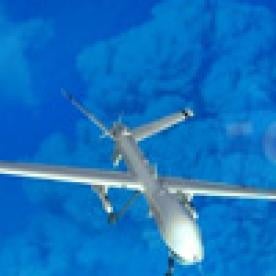November 2014 was a busy month for the Unmanned Aircraft System (UAS) industry. In the same week that CNN reported companies were offering $100,000 salaries to Unmanned Aircraft System (aka drone) pilots, the National Transportation Safety Board held that the Federal Aviation Administration was authorized to assess a $10,000 penalty against a commercial UAS operator and that UAS satisfy the statutory definition of aircraft. Huerta v. Pirker, NTSB CP-217 (Nov. 18, 2014).
The NTSB’s decision is noteworthy because in the commercial aviation industry, the FAA has the discretion to assess penalties against the employee, the aircraft operator, or both. That UAS are in fact aircraft, subject to FAA regulations, will allow the agency to apply the same discretionary enforcement scheme towards the UAS industry, both operators and employees, as to the commercial aviation industry.
Further, the FAA is two years behind schedule in publishing UAS regulations, thus there are no regulatory standards for commercial UAS operators. At present, the FAA has a general prohibition against commercial UAS operations, but it has granted individual waivers to specific UAS activities on an ad hoc basis (the details of this are outlined under the FAA part 333 exemption process). The requirements for the waivers varied based on the nature and location of the activity.
Background of Pirker
The general operating and flight rules in the Federal Aviation Regulations, known as Part 91, prohibit operating an aircraft in a careless or reckless manner. 14 C.F.R. § 91.13(a).
The FAA assessed a civil penalty of $10,000 against Rafael Pirker for operating a UAS in a manner that violated FAR Part 91. The FAA invoked Part 91 against Mr. Pirker individually because Pirker did not have authorization from the FAA to operate a UAS for commercial purposes. Pirker’s UAS consisted of a four-pound Ritewing Zephyr II with a wingspan of 56 inches. He was filming a promotional video for the University of Virginia and had operated the Zephyr at altitudes as low as 10 feet and as high as 1,500 feet off the ground and in close proximity to pedestrians, moving vehicles, and an active heliport. These operating parameters violated two of the FAA’s current flight envelope restrictions: vertical limitation for small UAS is limited to 400 feet above ground level and not in or near an active airport area.
Pirker challenged the FAA’s penalty assessment, arguing the Zephyr was a model aircraft, did not satisfy the definition of an aircraft, and therefore was not subject to FAR Part 91. The administrative law judge agreed with Pirker and dismissed the penalty. The ALJ noted the FAA had previously published separate safety standards for “aircrafts” and “model aircrafts,” and if the FAA’s argument that a UAS was an aircraft is taken to its logical conclusion, FAR Part 91 regulations could be applied to paper airplanes and toy balsa wood gliders.
NTSB Concludes UAS Covered under Existing Aviation Regulations
On appeal, the NTSB overruled the ALJ’s conclusions. The NTSB acknowledged that a diverse set of stakeholders were interested in the Pirker decision and that myriad issues were raised in friend-of-the court briefs, but the NTSB limited its holding to one: that Pirker’s UAS is considered an “aircraft” for the purposes of FAR Part 91 and, therefore, is prohibited from “operating in a careless or reckless manner so as to endanger the life or property of another.” 14 C.F.R. § 91.13(a).
The NTSB based its decision on Congress’ definition of an aircraft as “any contrivance now known or hereinafter invented, used or designed for navigation of or flight in the air.” Federal Aviation Act of 1958. Pub. L. No. 85-726, § 101(5); 49 U.S.C. § 40102(a)(6). The NTSB concluded this definition, written in 1958, indicated that Congress anticipated future technologies would be included in the definition of an aircraft. Additionally, the NTSB noted that FAA advisory circulars and notices encourage model aircraft operators to avoid overflying populated areas, and these compliance documents never excluded model aircraft from FAR Part 91’s requirements. Therefore, a UAS is an aircraft, the NTSB concluded, and is subject to FAR Part 91.
Absence of Regulations
One important topic the NTSB decision sidesteps is the FAA’s continued prohibition on UAS operations for commercial purposes despite its continuing failure to publish regulations governing UAS activities. On June 26, 2014, the Department of Transportation Inspector General reported that the FAA “is significantly behind schedule” in meeting many UAS-related requirements of the 2012 FAA Modernization and Reform Act. (FAA Faces Significant Barriers to Safely Integrate Unmanned Aircraft Systems into the National Airspace, p.2, Office of Inspector General, Dept. of Transp., AV-2014-061, June 26, 2014.) The FAA says it still intends to publish a proposed rule for small UAS (weighing 55 pounds or less) by the end of 2014.
Unfortunately, these delays create greater ambiguity and conflict for the growing UAS industry. While major corporations are advertising high-paying salaries for UAS operators, reports of UAS infringements on commercial airspace are spiking across the nation. Recently, many commercial airline flights have reported one or more UAS operations encroaching on the airspace at New York’s John F. Kennedy Airport.
Business Uncertainty and Risk
Businesses wanting to enter the UAS industry or utilize UAS equipment must be mindful of the risks associated with this unregulated area. The lack of regulations creates uncertainty for employers and employees at the controls of UAS operations, and while the FAA has granted waivers for commercial operations, the requirements for obtaining them vary.
According to the Inspector General, the FAA has given waivers for 18 private sector operations and approximately 300 public sector operations. Between June 2014 and September 2014, the FAA granted seven waivers for commercial operations. The first waiver, to British Petroleum, allowed UAS to inspect pipelines and infrastructure on Alaska’s North Slope and off shore. The other six were issued to aerial photo and video production companies, allowing the film and television industry to operate UAS in the national airspace system. The waivers for the aerial photo and video companies require the UAS operators hold private pilot certificates (governed by FAR Part 91), keep the UAS within their line of sight at all times, and operate the UAS only within the “sterile area” on the film set. There is no indication that the waiver to British Petroleum and its contractor included similar restrictions, which is understandable based on the nature of the operation and the sparse population on Alaska’s North Slope.
Until the FAA completes the UAS rulemaking process, stakeholders and prospective commercial UAS operators must be prepared for ad hoc approval requirements and enforcement efforts predicated on existing FAR provisions. This may be unfamiliar territory for prospective operators who have not operated in the aviation industry. Additionally, individual UAS operators must understand that as a result of Pirker, the FAA likely will have the discretion to assess monetary penalties against employers and employees if a UAS is operated in violation of FAR Part 91, and if a waiver has been given to the employer, for violation of any additional aviation regulations identified in that waiver.




 i
i


